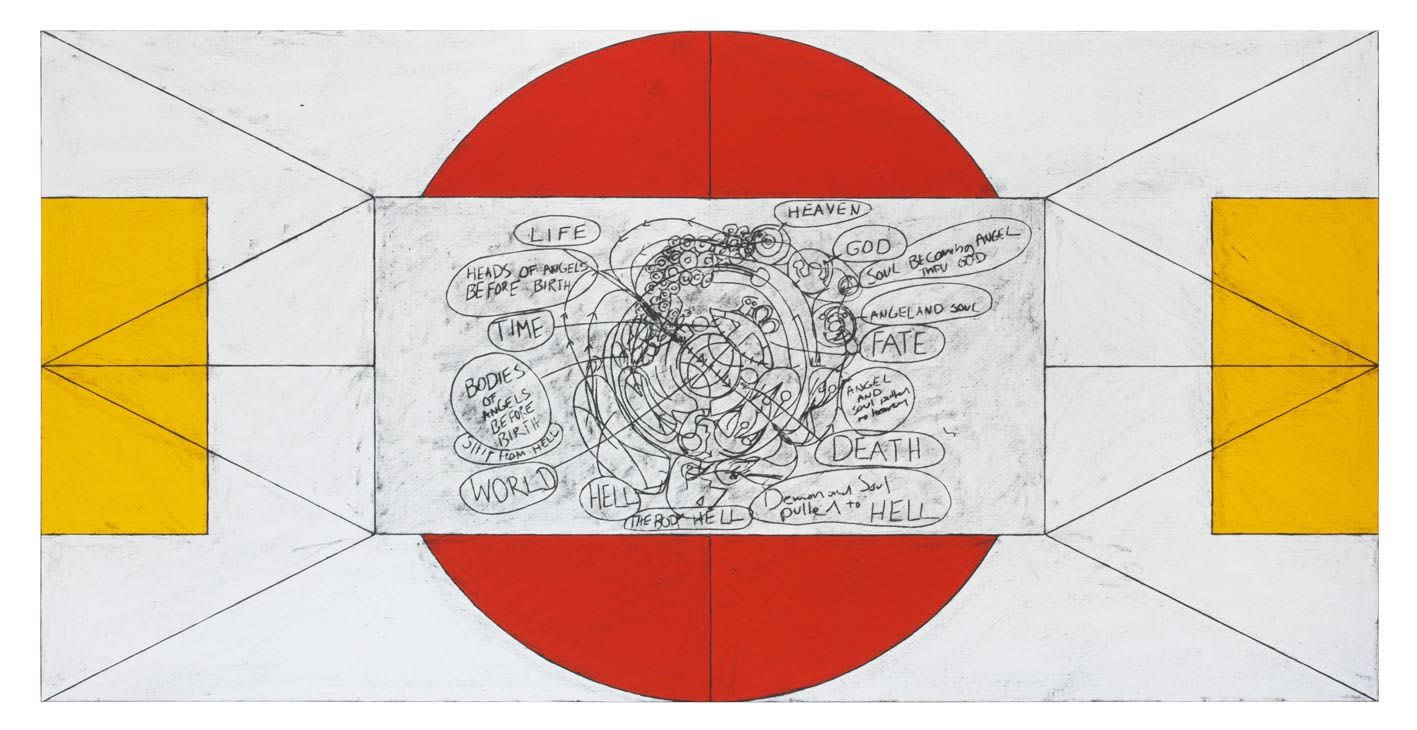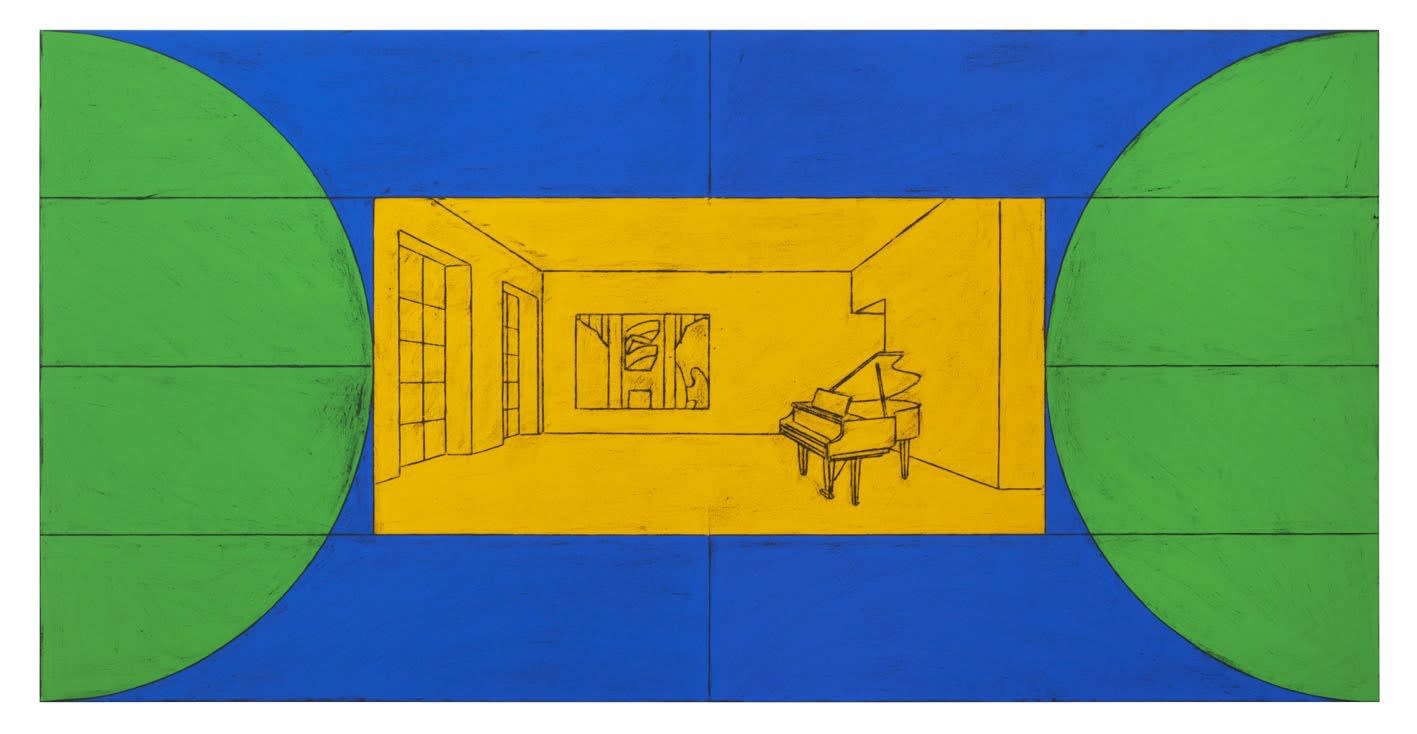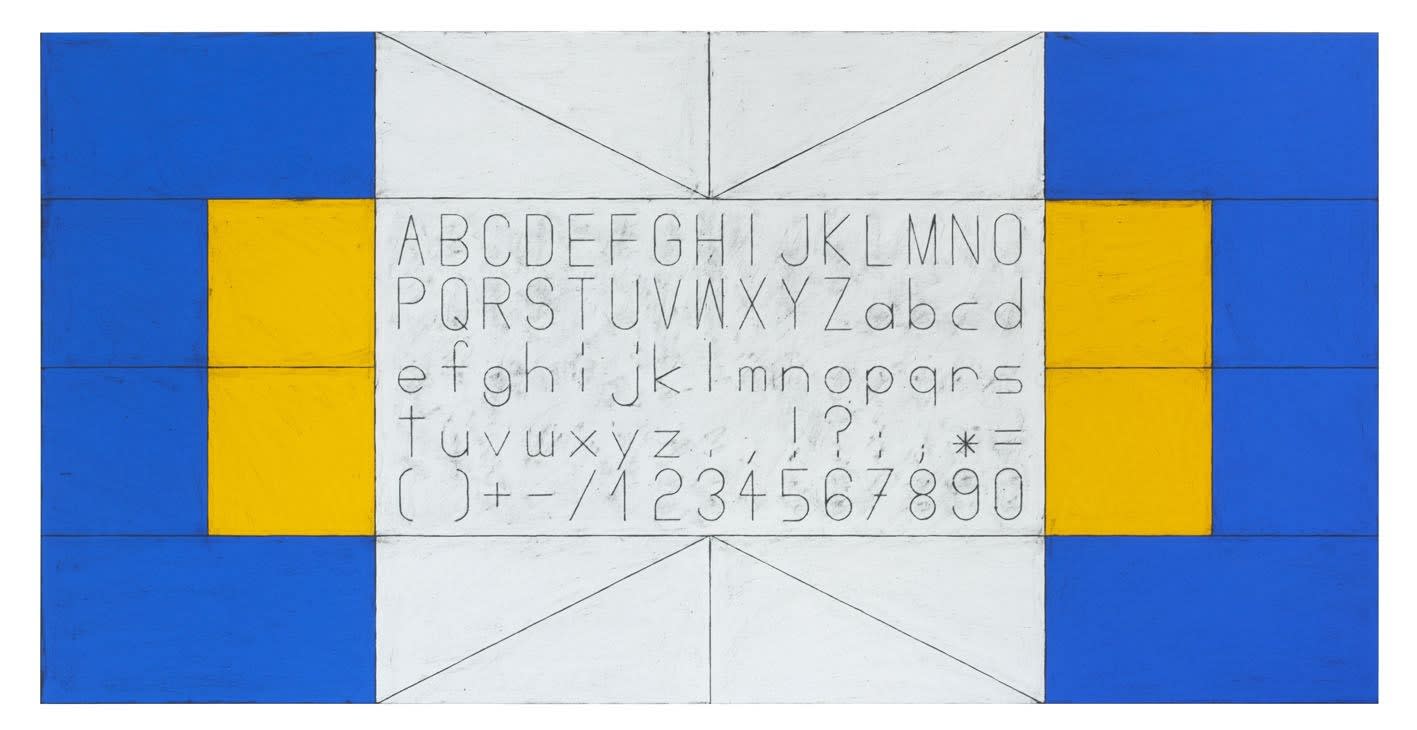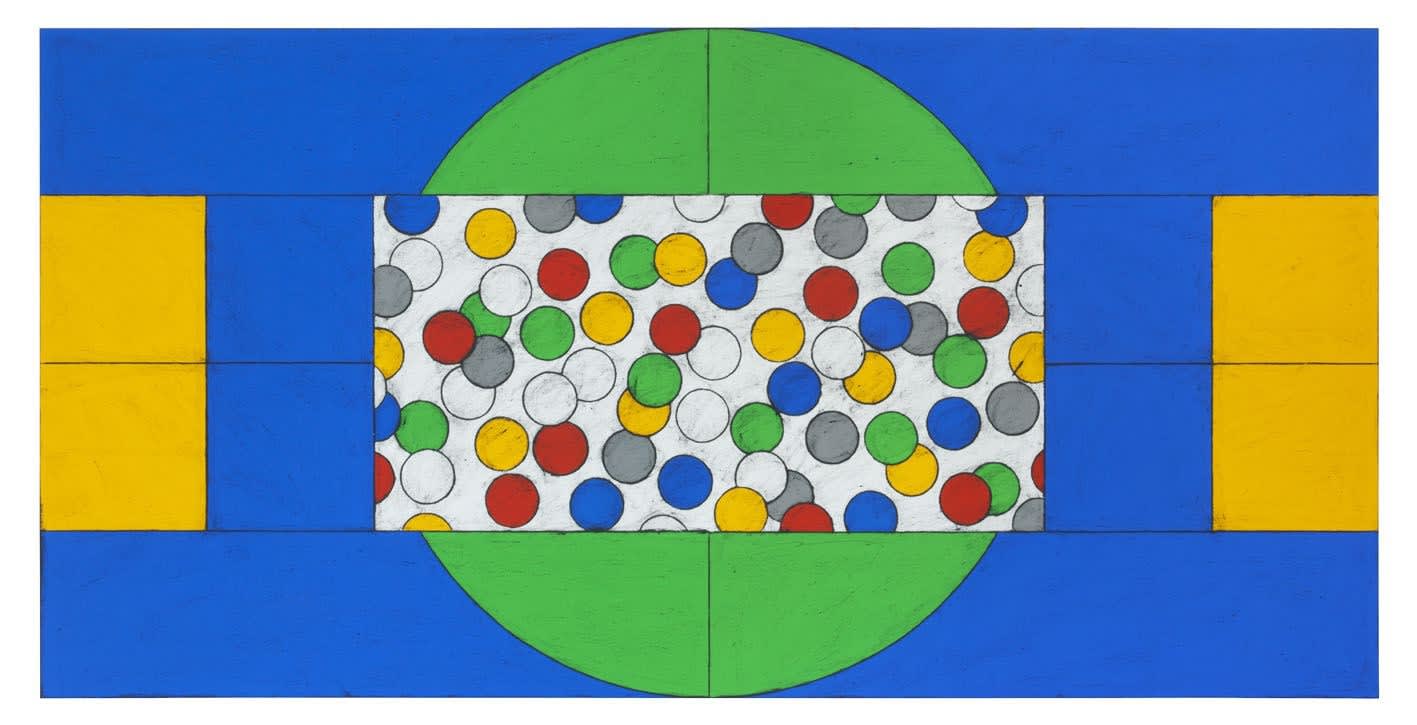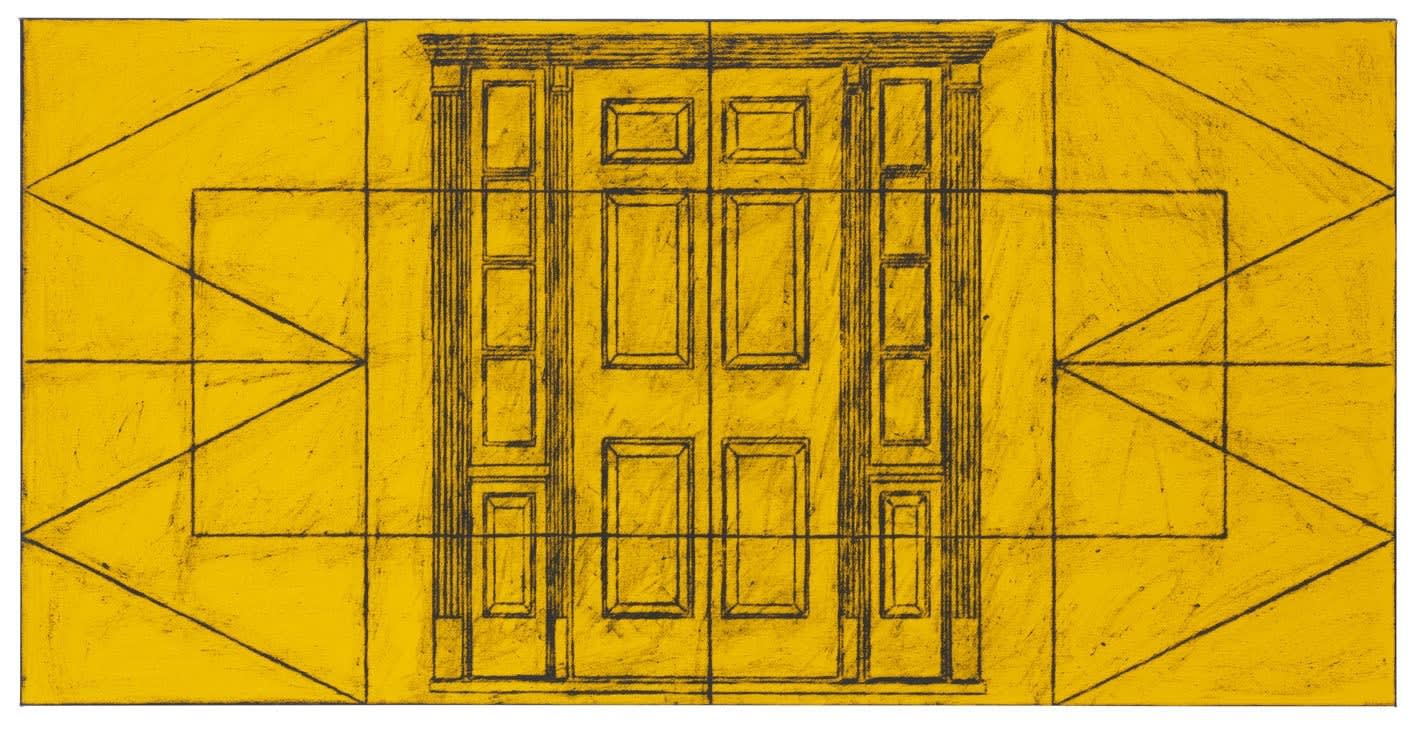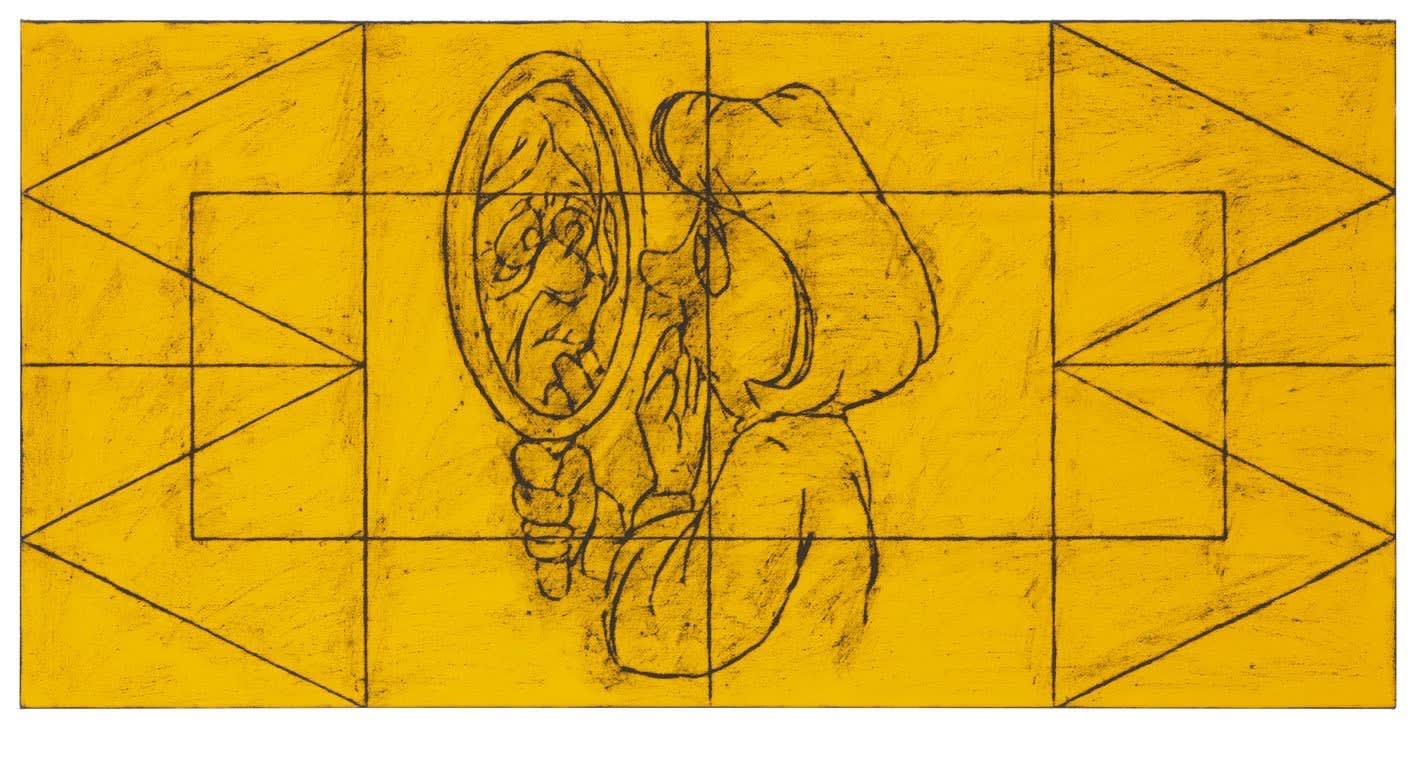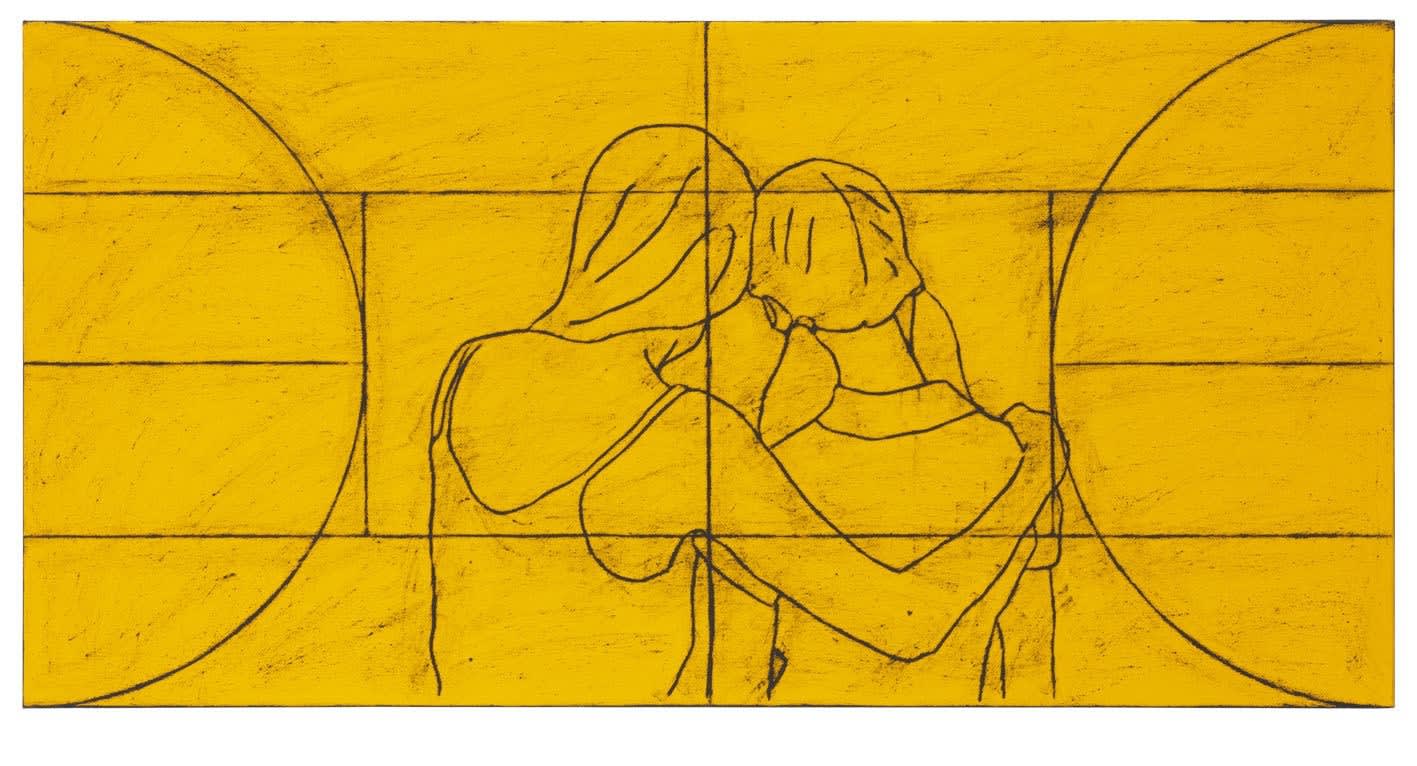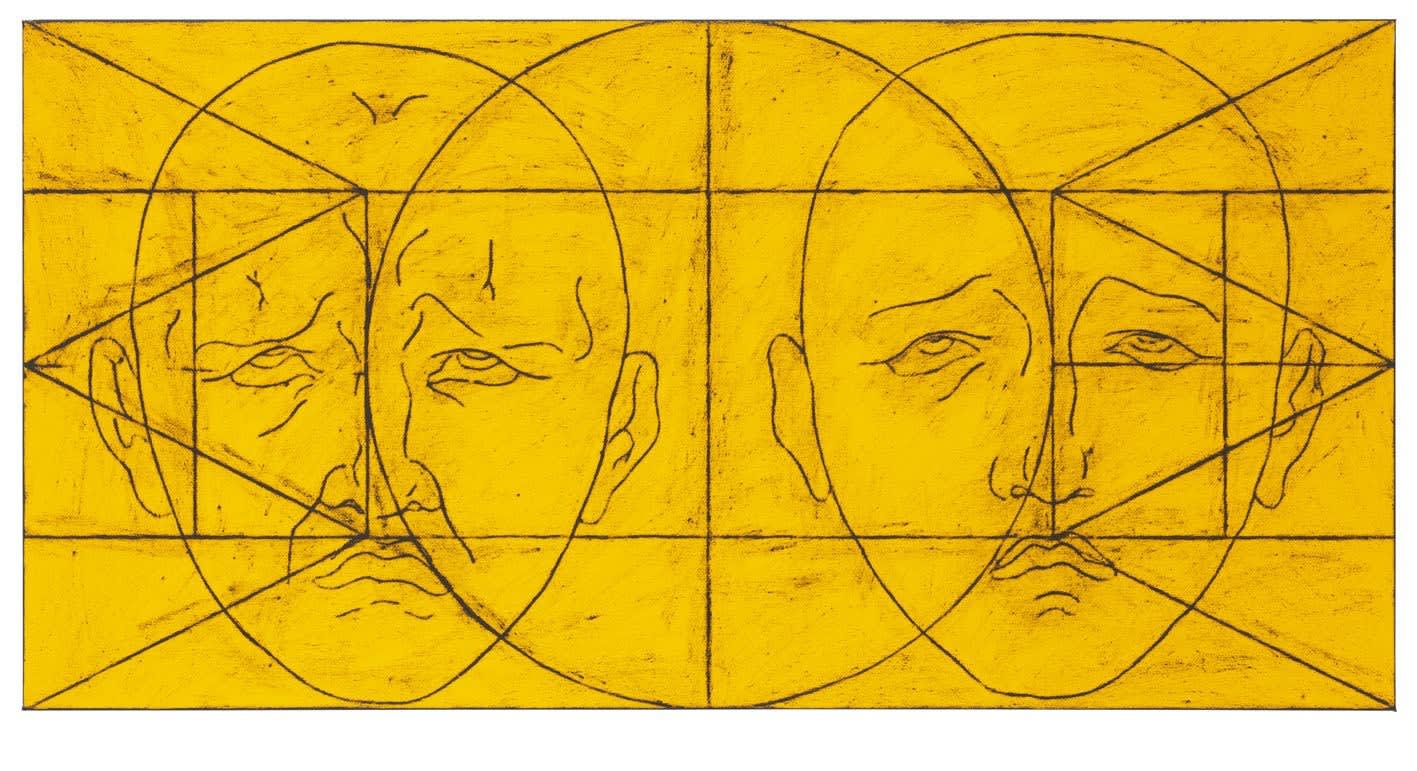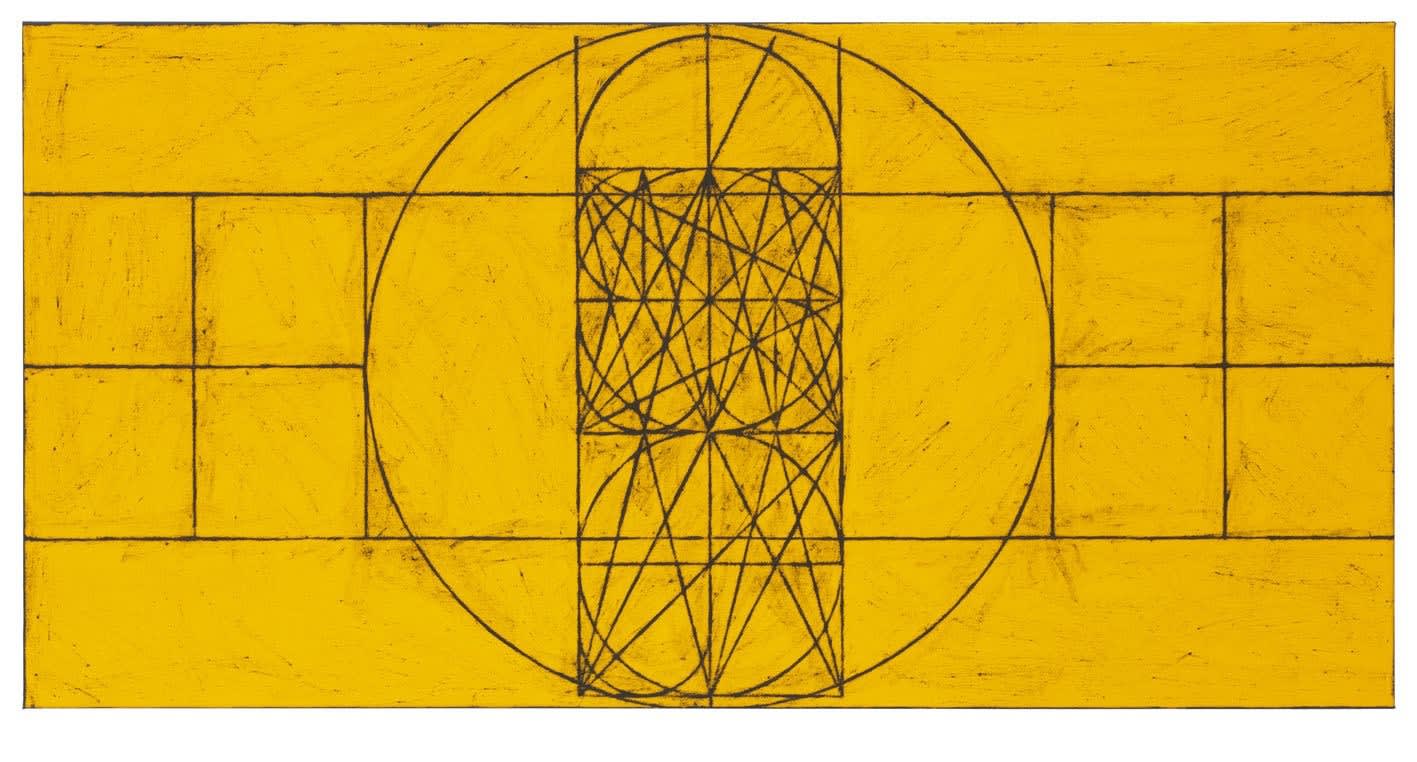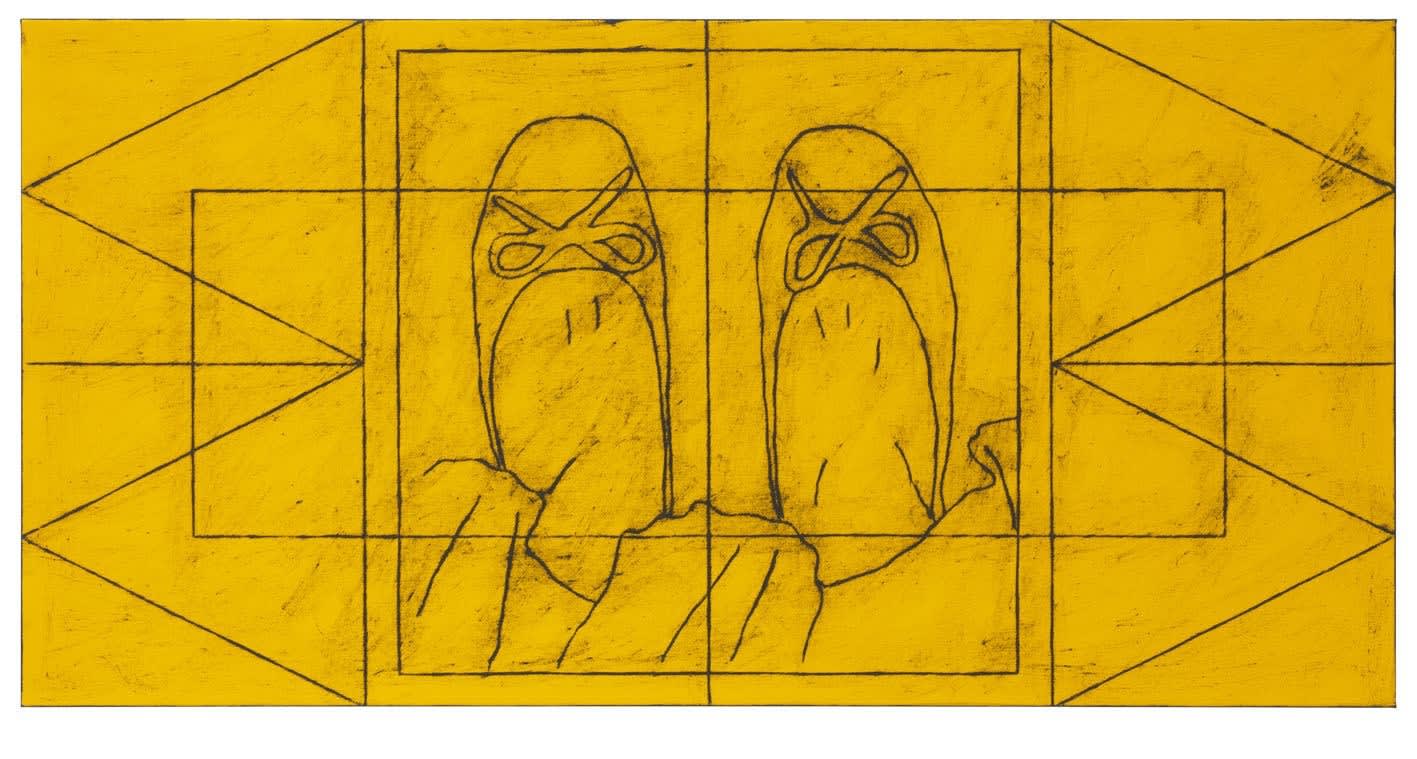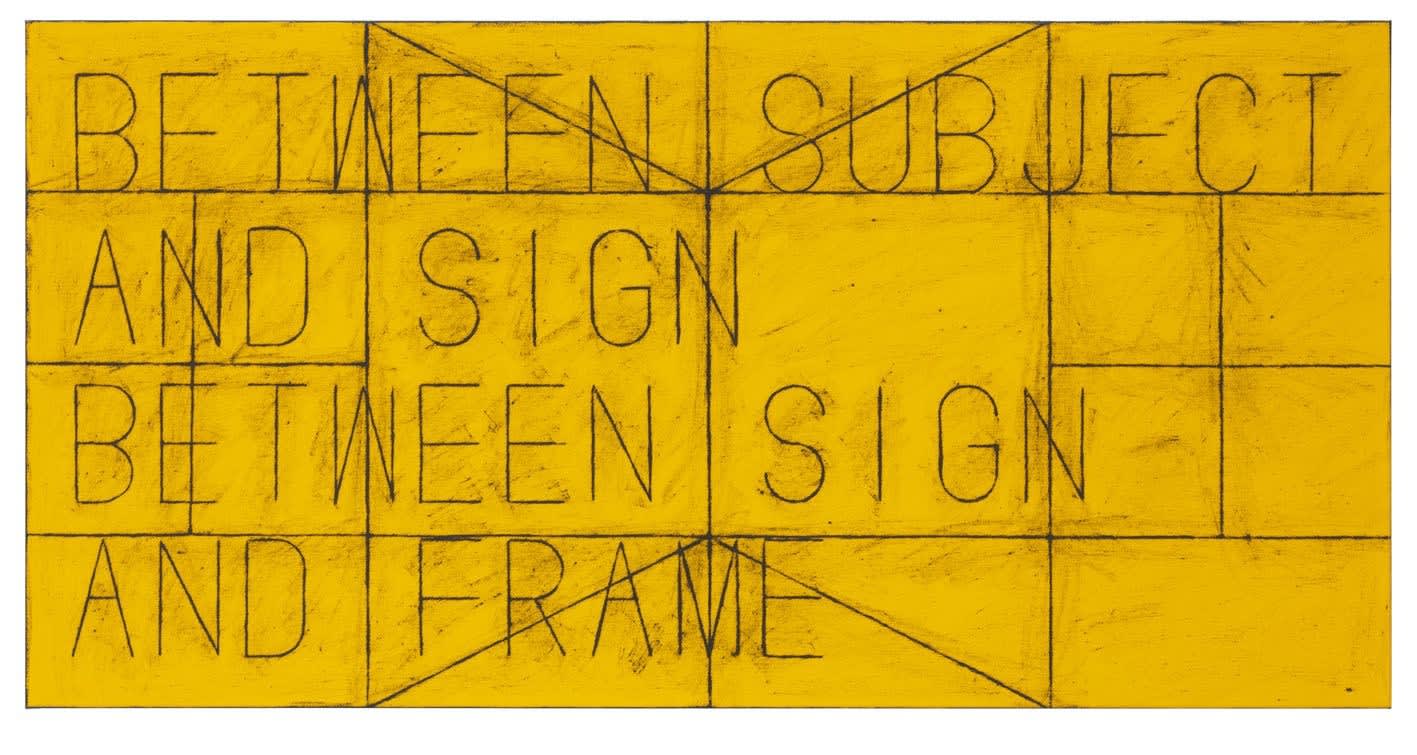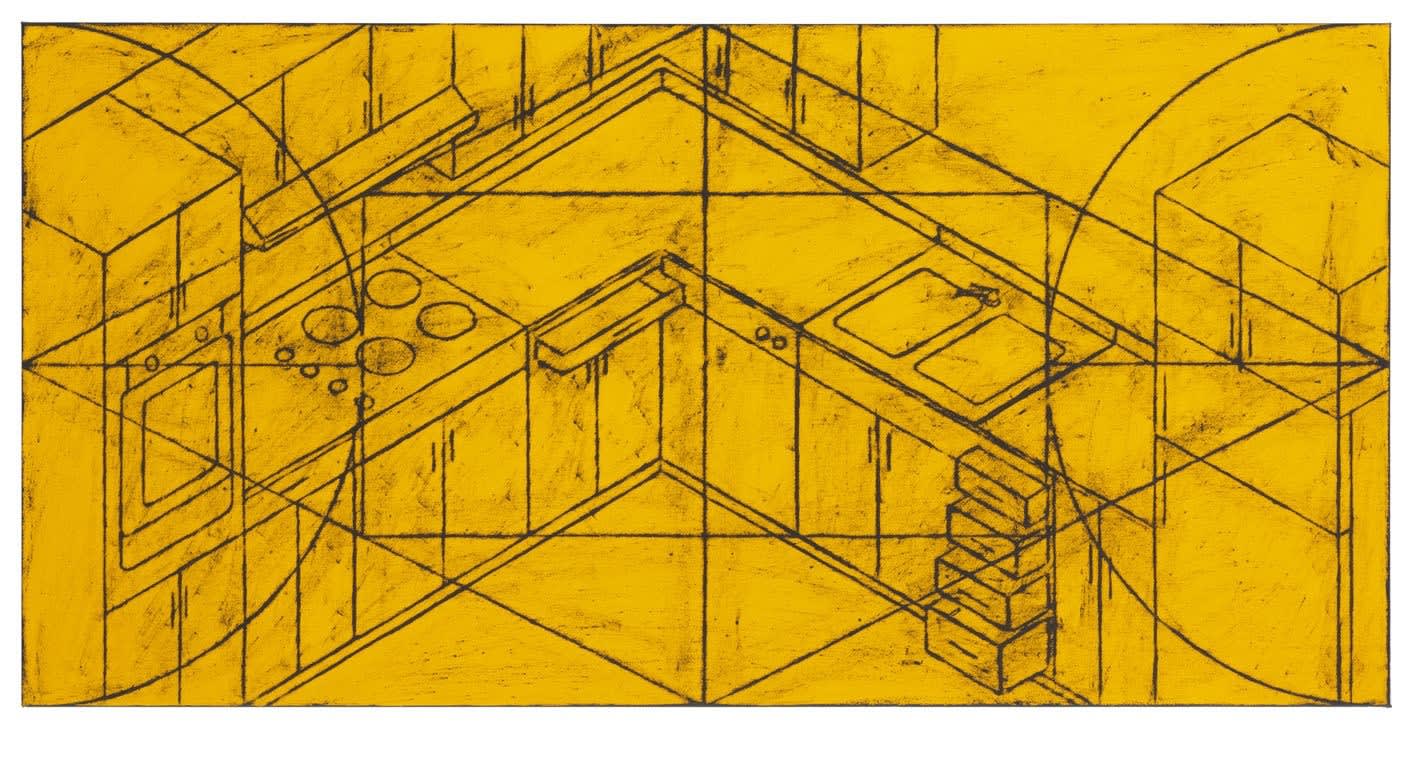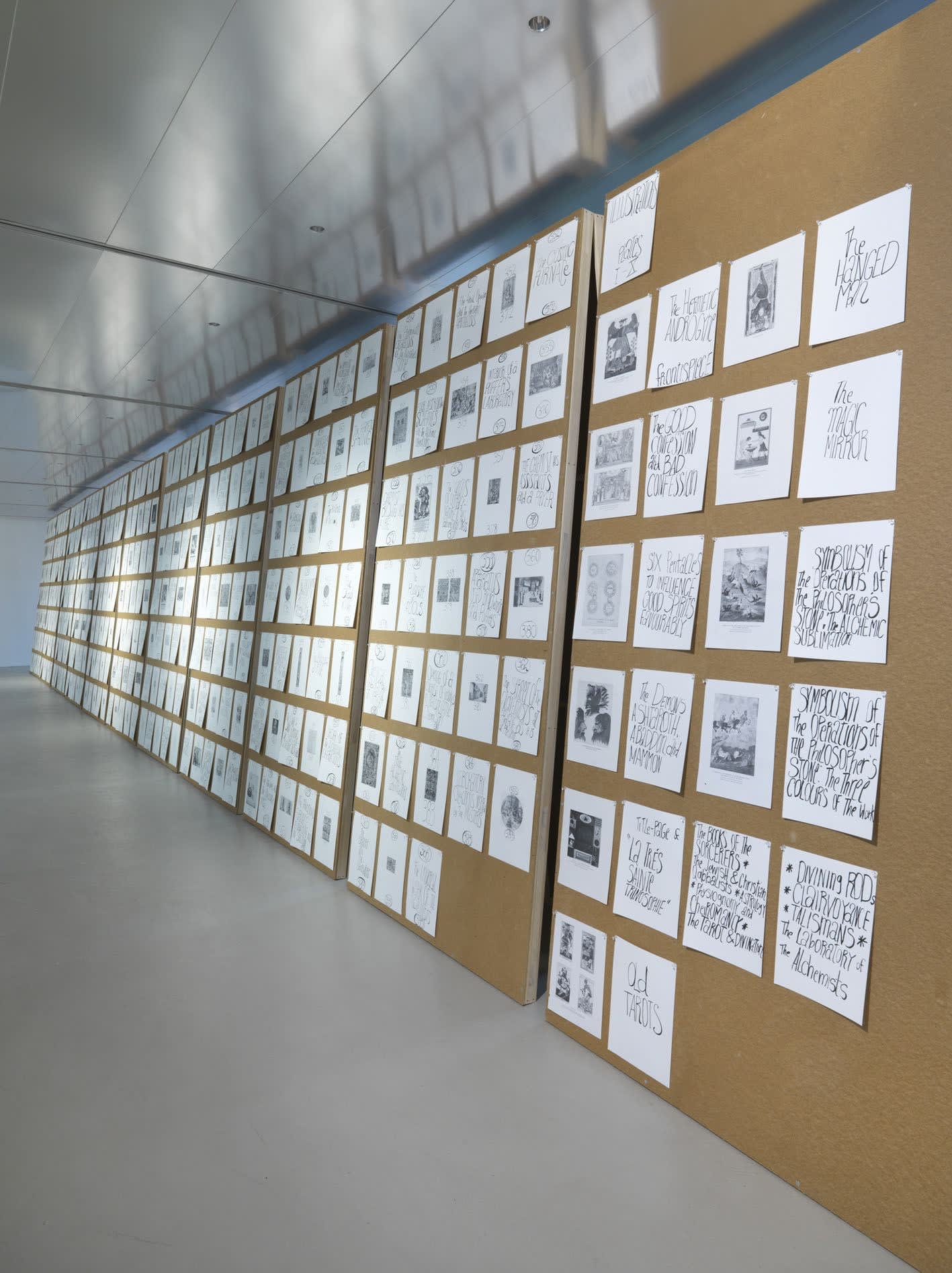Matt Mullican: Between
„Matt Mullican’s work pursues an equally simple and extraordinary claim. It is to be no more and no less than a model for comprehending and ordering the world. His art encompasses a complex system comprising firm and fleeting elements that stand in firm and fleeting relationships to each other. This means that Mullican’s oeuvre exemplarily attempts to get to the root of age-old universal questions regarding our existence with ever new formal means. The foundation of his artistic concept is the examination of the relationships between the reality of things and our perceptions that determine their appearance. In order to get a grip on the universe through organisation it is necessary to develop models that enable us to differentiate and categorise things. Mullican has worked continuously on this project of systemising his subjective world, relying in the process on the methodology of the encyclopaedia and social anthropology. For him, art is located in the realm of the symbolic. He is concerned with the idea that everything has a meaning. Although he is aware that a complete universal collection and depiction is impossible, he continues pursuing this project undeterred. With regard to each individual work, this means that he sees an object or its depiction simultaneously as part of a universe and as a universe in itself.
Mullican’s artistic practice is focused – with varying degrees of emphasis over the course of his career – on blocks of works. These are artworks that encompass extremely diverse forms of medial representation on the one hand and performative works on the other in which Mullican regularly works with hypnosis as a speculative temporal form of expanding consciousness. This is supposed for example to make so-called precognitive experiences possible for him, i.e. the perception of future or remote occurrences as well as returning to already experienced life. It goes without saying that these two areas are closely linked, permeating each other in the one or other way, in formal terms as well. The two illustrative models in Mullican’s artistic creed are cartography and cosmology. In so-called Charts he describes the splitting of a thing from the objective material reality to its purely subjective idea. Step-by-step they explain the perceptive of reflective connections in which we abstract everyday things and circumstances. In a groundwork of this model, Mullican ultimately narrows our appropriation and orientation in reality down to five existential areas of perception and cognition and assigns symbols and colours to them.
The lowest layer is occupied by the objective. It is symbolised by the basic geometrical shapes of the triangle, circle and square as well as the colour green. It is the level of the purely material state that has no formal meaning and is based on the concept that the whole world consists of material. Above this rises the everyday world, the World Unframed that is full of objects and images whose realities and process are understood to be self-evident. It is visualised by the symbol of the stylised globe and the colour blue. The World Framed is at the centre of the chart. The framed globe and the colour yellow symbolise the sphere of thoughts and ideas that are expressed in art and science. It represents the idea per se, the abstract concept detached from an individual object.
As an instrument of communications, language, whose semiotic system conveys the meaning of things, follows in black and white. It stands in a direct relationship to the objects. The significance they convey is also determined by the subjective experience. The uppermost authority is the level of the subjective that stores the concept of things and orders their relationships. It is the authority of the spirit that determines the appropriation of reality. It is symbolised by the head with the brain and the colour red. The subject’s thoughts and feelings are found in the red area. They exist detached from the object. This universal model thus comprehends a thing from its unformed,elementary components to the comprehensive perception of its form: “We thus have the object without subject (matter or material) at the bottom of the chart and the subject without object (emotion) at the top. These are the two ends. Both sides are practically impossible but both function in the reality of a chart.” (Mullican)”
Ulrich Wilmes, from: Matt Mullican. Im Gespräch / Conversations, DuMont, Cologne, 2011, p. 6f. Matt Mullican (1951, Santa Monica, California) lives and works in Berlin and New York. He studied at the California Institute of Arts (CalArts), Valencia, in John Baldessari’s class and received his degree in 1974. Since the 1970s, Matt Mullican had numerous institutional solo exhibitions, among others at the Museum of Modern Art, New York, at the Neue Nationalgalerie, Berlin, Haus der Kunst, Munich, at the Kunsthalle Mainz and at the Museo Tamayo, Mexico City. Recently, his work was presented in group exhibitions at the Hammer Museum, Los Angeles, at the Hamburger Bahnhof, Berlin and the Museum Brandhorst, Munich, among others. Performances and Lectures found place at Culturgest, Lisbon, at the Louvre, Paris and at PRAXES Center, Berlin. A comprehensive solo exhibition opens in Summer 2016 at Kunstmuseum Winterthur, which will travel to the Kunsthalle Vogelmann, Heilbronn. His work is represented in numerous public collections, including Museum Brandhorst, Munich, Ludwig Museum, Cologne, the Centre Pompidou, Paris, the Museum of Modern Art, New York, the Whitney Museum of American Art, New York and the MOCA, Los Angeles. In May 2016 an extensive catalog will be published by Ringier. The publication includes about 400 of his rubbings from 1984 – 2015. Since 2009, Matt Mullican is a professor at the University of Fine Arts Hamburg.
-
 Matt MullicanUntitled (5 Banners, Tamayo), 2013Nylon5 parts, each:
Matt MullicanUntitled (5 Banners, Tamayo), 2013Nylon5 parts, each:
196 27⁄32 x 177 11⁄64 inches
500 x 450 cm -
 Matt MullicanSUBJECTIVE GLASS 2010 / LANGUAGE GLASS 2010 / WORLD FRAMED GLASS 2010 / WORLD UNFRAMED GLASS 2010 / ELEMENT GLASS 2010 , 2010set of 5 unique stained glass windows (stained glass, lead and metal frame)200 x 100 cm
Matt MullicanSUBJECTIVE GLASS 2010 / LANGUAGE GLASS 2010 / WORLD FRAMED GLASS 2010 / WORLD UNFRAMED GLASS 2010 / ELEMENT GLASS 2010 , 2010set of 5 unique stained glass windows (stained glass, lead and metal frame)200 x 100 cm
78 47⁄64 x 39 3⁄8 inches -
 Matt MullicanUntitled (Generator, who feels the most pain), 1998table, drawing and electrostatic generatorLarge table:
Matt MullicanUntitled (Generator, who feels the most pain), 1998table, drawing and electrostatic generatorLarge table:
92 x 215 x 91 cm
36.2 x 84.6 x 35.8 inches
Framed drawing:
46 x 53,5 cm
18.1 x 21 inches
Small table with generator:
162 x 60 x 37 cm
63.7 x 23.6 x 14.5 inches -
 Matt MullicanUntitled (Evolutionary Chart; Etched Granite), 19908 parts, etched granite121.9 x 975.4 cm
Matt MullicanUntitled (Evolutionary Chart; Etched Granite), 19908 parts, etched granite121.9 x 975.4 cm
48 x 384 inches
-
 Matt MullicanUntitled (A Place to Sleep), 20162 Pillows, 1 sheet, wood50 x 100 x 40 cm
Matt MullicanUntitled (A Place to Sleep), 20162 Pillows, 1 sheet, wood50 x 100 x 40 cm
19 11/16 x 39 3/8 x 15 3/4 inchesEdition of 4 plus 1 AP -
![Matt Mullican 40 Posters of Heaven and Hell, 2016 archival inkjet [epson stylus 3800], drawing, archival paint pen each sheet: 23 25/64 x 16 17/32 inches 59.4 x 42 cm](data:image/gif;base64,R0lGODlhAQABAIAAAAAAAP///yH5BAEAAAAALAAAAAABAAEAAAIBRAA7) Matt Mullican40 Posters of Heaven and Hell, 2016archival inkjet [epson stylus 3800], drawing, archival paint peneach sheet:
Matt Mullican40 Posters of Heaven and Hell, 2016archival inkjet [epson stylus 3800], drawing, archival paint peneach sheet:
23 25/64 x 16 17/32 inches
59.4 x 42 cm -
 Matt MullicanUntitled (20 glass balls), 1995Felt pen on glasseach Ø 7 7/8 inches / 20 cm
Matt MullicanUntitled (20 glass balls), 1995Felt pen on glasseach Ø 7 7/8 inches / 20 cm -
 Matt MullicanUntitled (Subjective Cosmology), 2016Oil stick rubbing and gouache on canvas150 x 300 cm / 59.1 x 118.1 inches
Matt MullicanUntitled (Subjective Cosmology), 2016Oil stick rubbing and gouache on canvas150 x 300 cm / 59.1 x 118.1 inches -
 Matt MullicanUntitled (Subject Frame Theater), 2016Oil stick rubbing and gouache on canvas150 x 300 cm
Matt MullicanUntitled (Subject Frame Theater), 2016Oil stick rubbing and gouache on canvas150 x 300 cm
59 1/16 x 118 7/64 inches -
 Matt MullicanUntitled (Piano and Picture), 2016Oil stick rubbing and gouache on canvas150 x 300 cm
Matt MullicanUntitled (Piano and Picture), 2016Oil stick rubbing and gouache on canvas150 x 300 cm
59 1/16 x 118 7/64 inches -
 Matt MullicanUntitled (World Unframed Landscapes), 2016Oil stick rubbing and gouache on canvassigned and dated verso150 x 300 cm / 59.1 x 118.1 inches
Matt MullicanUntitled (World Unframed Landscapes), 2016Oil stick rubbing and gouache on canvassigned and dated verso150 x 300 cm / 59.1 x 118.1 inches -
 Matt MullicanUntitled (Sign Typeface), 2016Oil stick rubbing and gouache on canvas150 x 300 cm / 59.1 x 118.1 inches
Matt MullicanUntitled (Sign Typeface), 2016Oil stick rubbing and gouache on canvas150 x 300 cm / 59.1 x 118.1 inches -
 Matt MullicanUntitled (Colored Elements), 2016Oil stick rubbing and gouache on canvasSigned and dated verso150 x 300 cm / 59.1 x 118.1 inches
Matt MullicanUntitled (Colored Elements), 2016Oil stick rubbing and gouache on canvasSigned and dated verso150 x 300 cm / 59.1 x 118.1 inches -
 Matt MullicanUntitled (World Door), 2016Oil stick rubbing and gouache on canvas75 x 150 cm
Matt MullicanUntitled (World Door), 2016Oil stick rubbing and gouache on canvas75 x 150 cm
29 17/23 x 59 1/16 inches -
 Matt MullicanUntitled (World Mirror), 2016Oil stick rubbing and gouache on canvas75 x 150 cm
Matt MullicanUntitled (World Mirror), 2016Oil stick rubbing and gouache on canvas75 x 150 cm
29 17/23 x 59 1/16 inches -
 Matt MullicanUntitled (Frame/Elements Empathy), 2016Oil stick rubbing and gouache on canvas75 x 150 cm / 29.7 x 59.1 inches
Matt MullicanUntitled (Frame/Elements Empathy), 2016Oil stick rubbing and gouache on canvas75 x 150 cm / 29.7 x 59.1 inches -
 Matt MullicanUntitled (Subjective Heads), 2016Oil stick rubbing and gouache on canvas75 x 150 cm
Matt MullicanUntitled (Subjective Heads), 2016Oil stick rubbing and gouache on canvas75 x 150 cm
29 17/23 x 59 1/16 inches -
 Matt MullicanUntitled (Elements Typeface), 2016Oil stick rubbing and gouache on canvas75 x 150 cm
Matt MullicanUntitled (Elements Typeface), 2016Oil stick rubbing and gouache on canvas75 x 150 cm
29 17/23 x 59 1/16 inches -
 Matt MullicanUntitled (Elements Landscape), 2016Oil stick rubbing and gouache on canvas75 x 150 cm / 29.7 x 59.1 inches
Matt MullicanUntitled (Elements Landscape), 2016Oil stick rubbing and gouache on canvas75 x 150 cm / 29.7 x 59.1 inches -
 Matt MullicanUntitled (World Feet), 2016Oil stick rubbing and gouache on canvas75 x 150 cm
Matt MullicanUntitled (World Feet), 2016Oil stick rubbing and gouache on canvas75 x 150 cm
29 17/23 x 59 1/16 inches -
 Matt MullicanUntitled (World Door Lock), 2016Oil stick rubbing and gouache on canvas75 x 150 cm
Matt MullicanUntitled (World Door Lock), 2016Oil stick rubbing and gouache on canvas75 x 150 cm
29 17/23 x 59 1/16 inches -
 Matt MullicanUntitled (Sign Text), 2016Oil stick rubbing and gouache on canvas75 x 150 cm / 29.7 x 59.1 inches
Matt MullicanUntitled (Sign Text), 2016Oil stick rubbing and gouache on canvas75 x 150 cm / 29.7 x 59.1 inches -
 Matt MullicanUntitled (Sign Text), 2016Oil stick rubbing and gouache on canvas75 x 150 cm / 29.7 x 59.1 inches
Matt MullicanUntitled (Sign Text), 2016Oil stick rubbing and gouache on canvas75 x 150 cm / 29.7 x 59.1 inches -
 Matt MullicanUntitled (Frame/Subject Kitchen), 2016Oil stick rubbing and gouache on canvas75 x 150 cm
Matt MullicanUntitled (Frame/Subject Kitchen), 2016Oil stick rubbing and gouache on canvas75 x 150 cm
29 17/23 x 59 1/16 inches -
 Matt MullicanUntitled (Frame/Subject 1st Person Sex Porno), 2016Oil stick rubbing and gouache on canvas75 x 150 cm
Matt MullicanUntitled (Frame/Subject 1st Person Sex Porno), 2016Oil stick rubbing and gouache on canvas75 x 150 cm
29 17/23 x 59 1/16 inches -
 Matt MullicanUp to 625, 20067 softboards, ink jet prints on paper, needles, wooden frame123 x 253 x 3.6 cm
Matt MullicanUp to 625, 20067 softboards, ink jet prints on paper, needles, wooden frame123 x 253 x 3.6 cm
48 27⁄64 x 99 39⁄64 x 1 27⁄64 inches -
 Matt MullicanIllustrated Anthology of Sorcery, Magic and Alchemy (22 Bulletin Boards), 201622 Bulletin Boards, 756 A4 Paperseach:
Matt MullicanIllustrated Anthology of Sorcery, Magic and Alchemy (22 Bulletin Boards), 201622 Bulletin Boards, 756 A4 Paperseach:
98 13/16 x 47 1/4 inches
251 x 120 cm -
 Matt MullicanUntitled (Computer Generated Details and Landscapes: Sky 1), 2003Duratrans light boxwith certificate40 x 50 cm
Matt MullicanUntitled (Computer Generated Details and Landscapes: Sky 1), 2003Duratrans light boxwith certificate40 x 50 cm
15 3⁄4 x 19 11⁄16 inches
(Duratrans) -
 Matt MullicanUntitled (Computer Generated Details and Landscapes: Water 1), 2003Duratrans light boxwith certificate40 x 50 cm
Matt MullicanUntitled (Computer Generated Details and Landscapes: Water 1), 2003Duratrans light boxwith certificate40 x 50 cm
15 3⁄4 x 19 11⁄16 inches
(Duratrans) -
 Matt MullicanUntitled (Default Atmospheres No. 02), 2003Duratrans light boxwith certificate91.8 x 123.3 cm
Matt MullicanUntitled (Default Atmospheres No. 02), 2003Duratrans light boxwith certificate91.8 x 123.3 cm
36 9⁄64 x 48 35⁄64 inches
(Duratrans)
93.8 x 125.3 x 10.2 cm
36 59⁄64 x 49 21⁄64 x 4 1⁄64 inches
(Light box) -
 Matt MullicanUntitled (Default Atmospheres No. 13), 2003Duratrans light box91.8 x 123.3 cm
Matt MullicanUntitled (Default Atmospheres No. 13), 2003Duratrans light box91.8 x 123.3 cm
36 9⁄64 x 48 35⁄64 inches
(Duratrans)
93.8 x 125.3 x 10.2 cm
36 59⁄64 x 49 21⁄64 x 4 1⁄64 inches
(Light box)
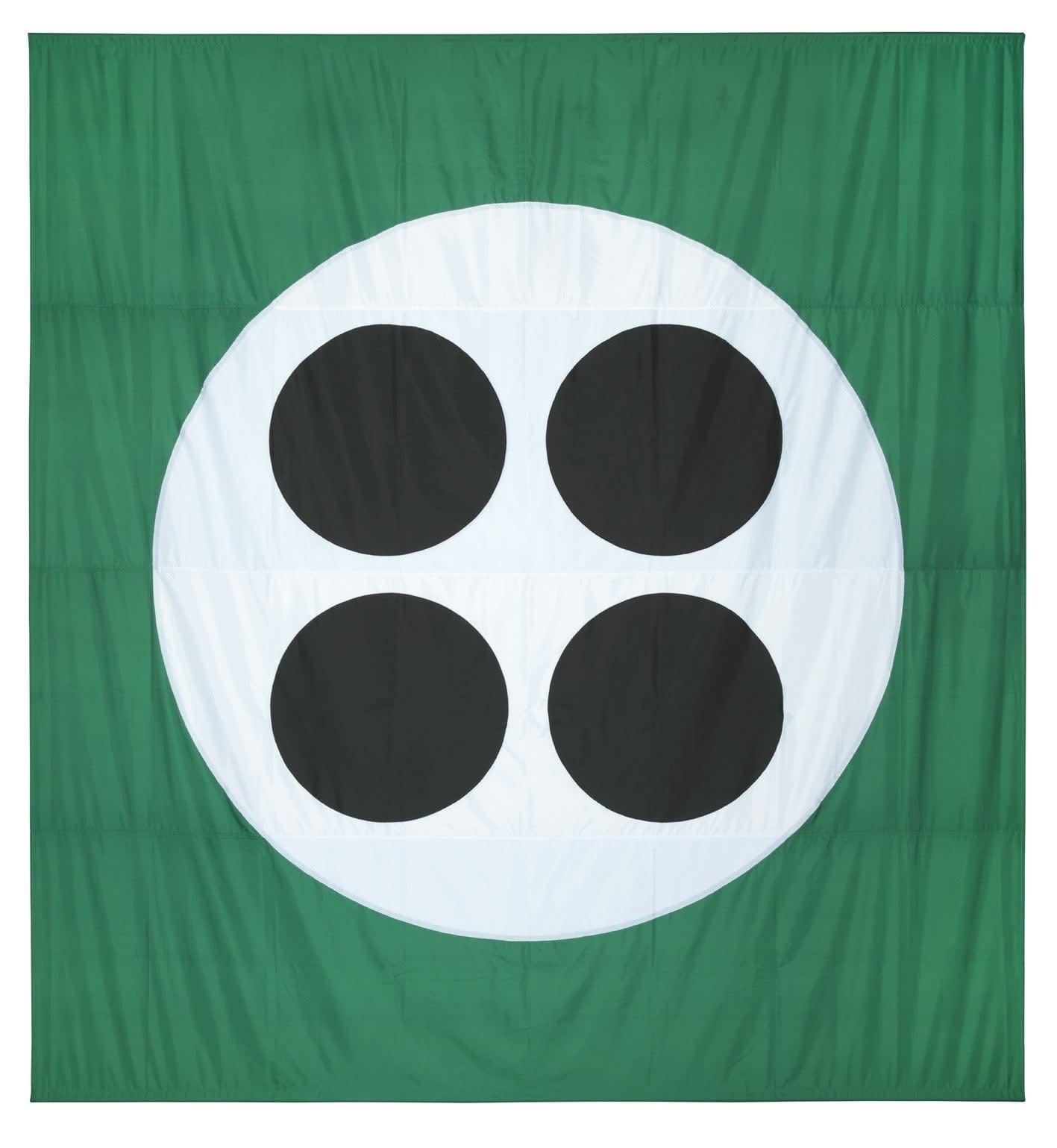
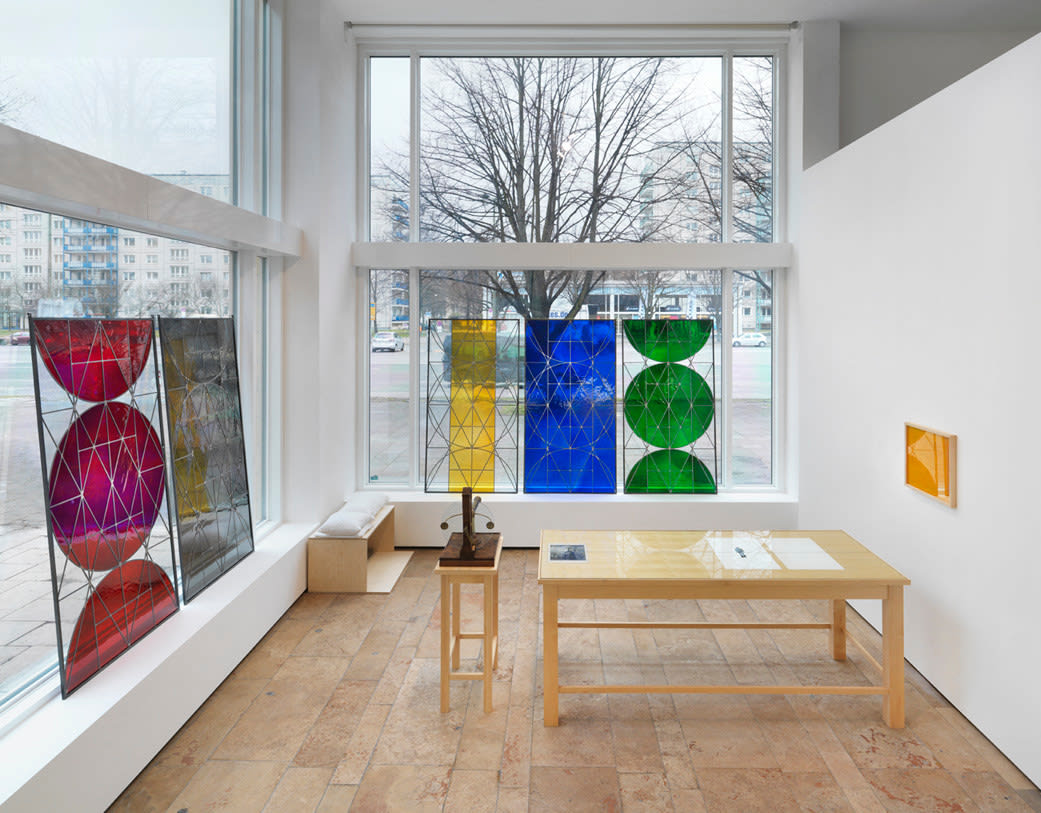
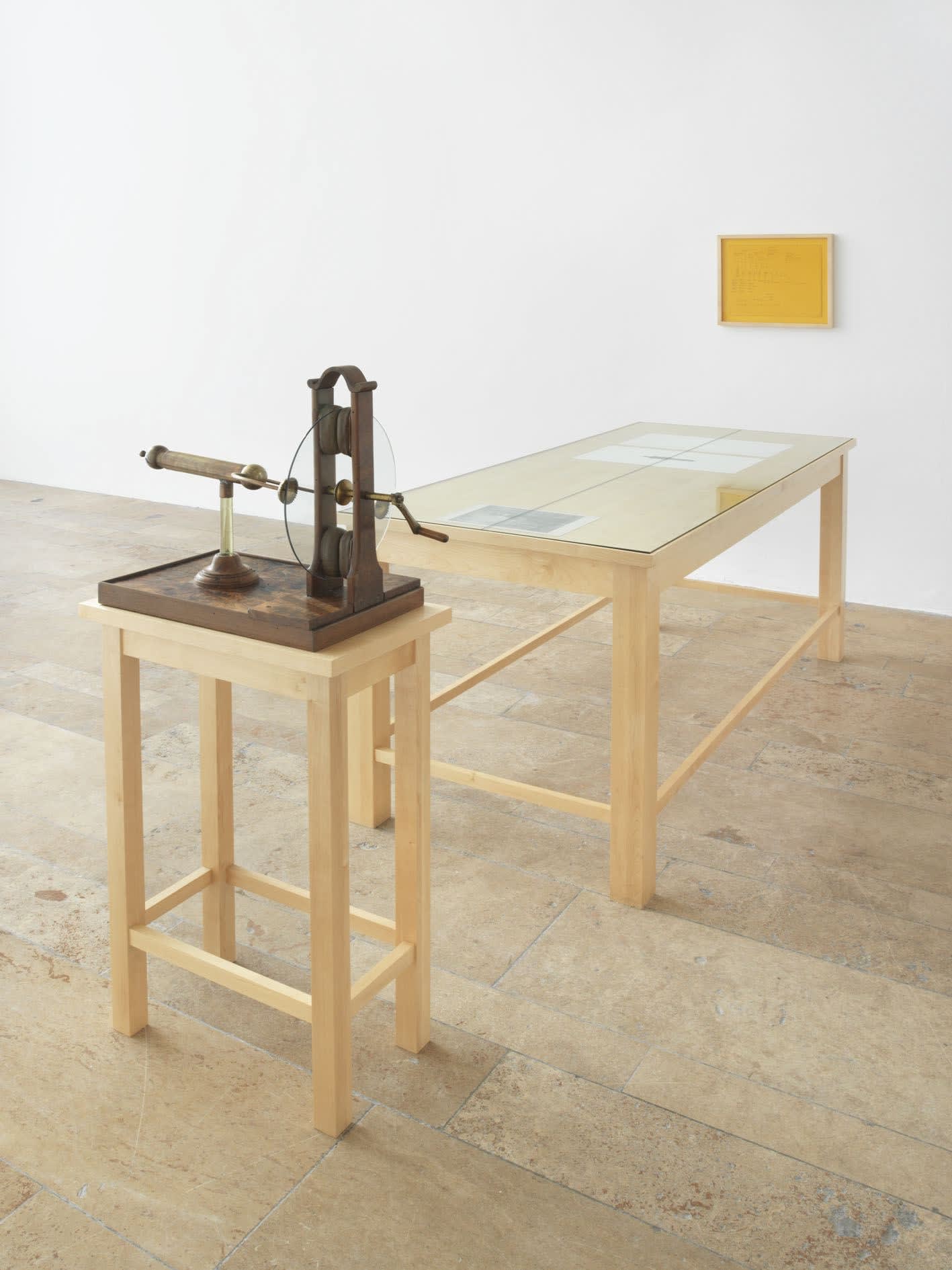

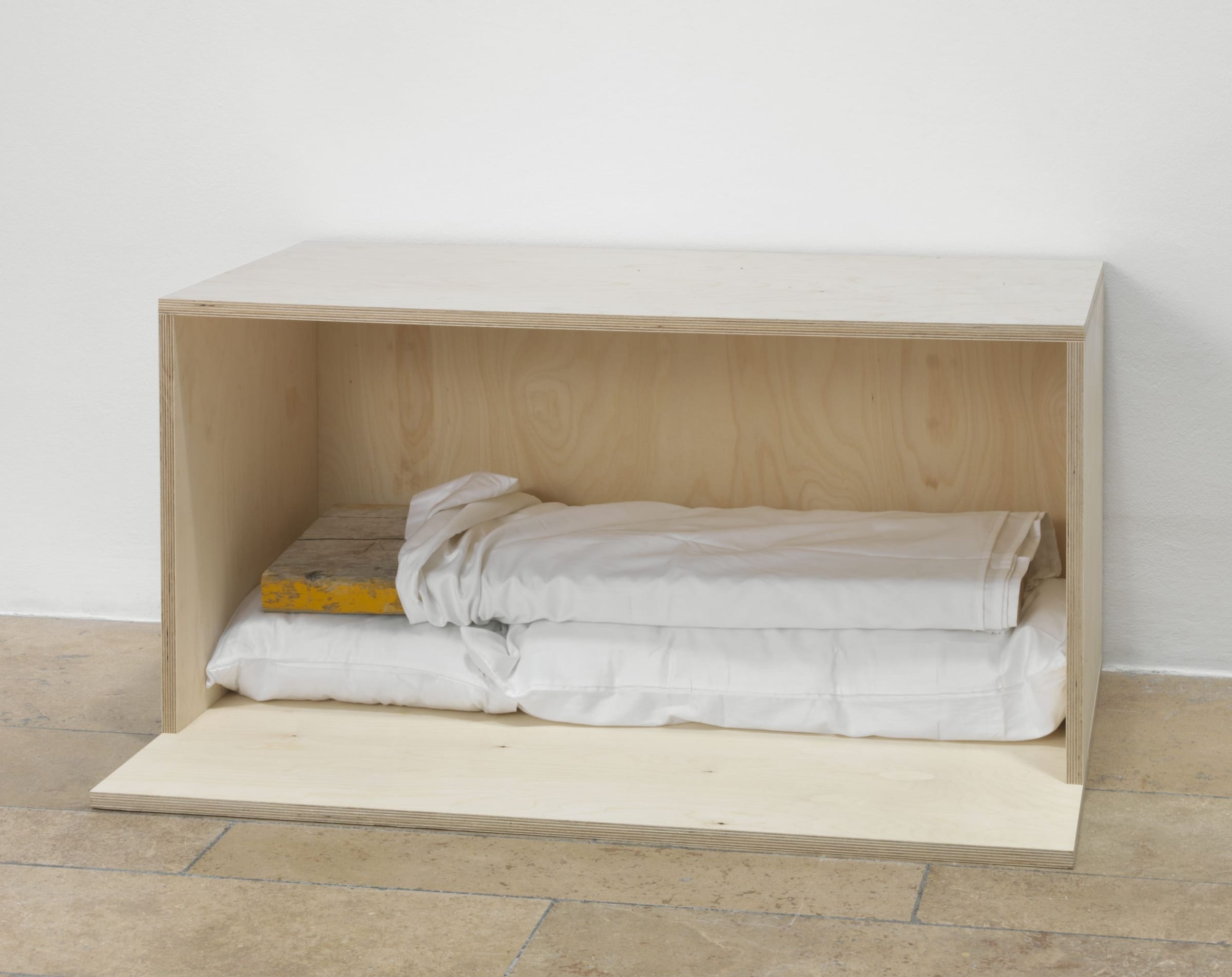
![Matt Mullican 40 Posters of Heaven and Hell, 2016 archival inkjet [epson stylus 3800], drawing, archival paint pen each sheet: 23 25/64 x 16 17/32 inches 59.4 x 42 cm](https://artlogic-res.cloudinary.com/w_2400,h_2400,c_limit,f_auto,fl_lossy,q_auto/artlogicstorage/capitainpetzel/images/view/2c641f751e6e8fdfe42961c050bd57cdj/capitainpetzel-matt-mullican-40-posters-of-heaven-and-hell-2016.jpg)

